The 5 Critical School Leadership Practices
By Ruth Ash and Pat Hodge
What is there to say about a principal with a burning vision for his or her students to achieve at higher levels?
What guidance is there to offer a principal, faculty, and staff with the desire to change the direction of the school and students’ lives? What hope can be offered middle grades students with a history of low performance expectations and little optimism for a positive future?
The collaborative search for answers to questions like these motivated the extraordinary middle-level leaders we write about in Five Critical Leadership Practices: the Secret to High-Performing Schools. These leaders made a critical difference in the lives of students, and we wanted to tell their stories and share their models.
All of these leaders use all of the Five Critical Practices of effective leadership that improves student learning. They are:
► Focus on Direction
► Build a Powerful Organization
► Ensure Student-Focused Vision and Action
► Give Life to Data, and
► Lead Learning
All of these practices are equally important. However, especially in grades 4-8, effective leaders know how to work with other professionals in the school to establish a vision and culture focused on student learning and student needs.
Leading change for student achievement
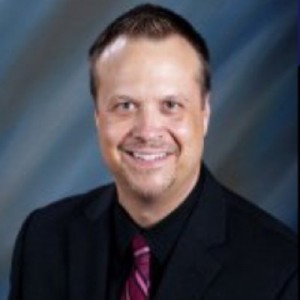
Craig Bates
One outstanding leader you will meet and come to admire in the book is Principal Craig Bates. Bates is the former principal of Winterboro School in Talladega County, Alabama, and is currently the coordinator of instructional technology for the entire district.
When Bates became principal of Winterboro High School, this 6-12 school no longer met the academic standards that were a hallmark of its history. He began a powerful collaboration to develop a vision and mission. He used this effort to challenge the status quo and lead a change in the environment of the school from one of doing what we’ve always done to one of building on the interests and strengths of every student and providing alternate avenues for learning and success.
Student performance increased significantly. Discipline referrals, out-of-school suspensions, and alternative school referrals decreased, and the graduation rate increased. Bates described the changes as an evolutionary process in culture, climate, and commitment resulting in Winterboro High School receiving the prestigious National School Change Award, one of only six schools in the country to win this award in 2012.
Bates shared this sense of urgency about students with faculty, staff, students, parents, and others. He supported and equipped the faculty and staff as they changed their vision and direction to that of a problem-based learning environment. Teaming with Bates, the faculty and staff devoted themselves to identifying and communicating their beliefs and the foundations of practice for their school. Every stakeholder joined in creating the best possible learning environment for students.
The school-wide plan supported students in achieving success in the new learning format. The plan provided a structure for creating a physically safe environment as well as an academically secure environment where success was the goal for each student.
Maintaining a culture of student focus
Focusing the work of school on students is an appropriate practice for any age or grade level. However, maintaining a culture of student focus is crucial for the developmental level of students in grades 4-8. Middle grades students are aware of their “fit” in the environment more than any other age range.
Finding acceptance among peers and adults, recognizing that someone at school cares about them, developing abilities in learning abstract concepts, and having a voice in decisions concerning their learning are a few of the forces at play in these students’ lives.
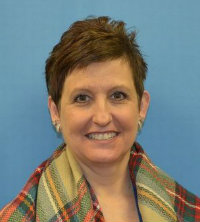
Phyllis Faust
Phyllis Faust, former principal of Hewitt-Trussville Middle School, introduced student focus groups to the staff and students as a venue for students to share their thoughts and experiences about their learning. Focus groups provided opportunities for students to have a voice in decisions about the types of learning experiences and instructional practices that worked best for them.
As students participated in focus groups, they realized that faculty genuinely wanted their input about how they learned, which instructional strategies were most meaningful for their learning, and how they could be more interested in the content. Faculty guided students in thinking more deeply about their learning, and students grew in ownership and understanding of their responsibilities in learning.
Coalescing around core beliefs
Effective principals lead powerful collegial conversations identifying their schools’ core beliefs about teaching and learning. Through book studies, review of research articles, and regular thought provoking discussions, faculty and staff deepen their common understanding of the school’s focus – its students.
Principals use affinity diagrams to facilitate establishing the beliefs of the school and to provide a safe environment for the sometimes-difficult dialogue. Establishing meeting norms sets parameters for interaction among participants and supports open and honest conversation.
As faculty and staff grapple with the process of identifying and sharing their personal non-negotiables and go-to-the-mat beliefs about learning, they reach a common understanding of the core beliefs that drive the work of the school. Core beliefs determine the direction of the school and form the basis of the school’s vision and mission. Once faculty and staff establish the school’s beliefs, it is the principal’s responsibility to inform all stakeholders of the beliefs and the direction of the school.
Moving beyond dissonance
Schools and districts develop eloquent vision statements that focus on student needs. Often, however, actions within the organization fail to reflect that vision. The dissonance between stated visions and day-to-day actions may reflect a lack of commitment to common beliefs. When this occurs, students and parents quickly observe a lack of coherence, and lose faith and trust in the school or district. Lost trust is frequently difficult to regain.
Forging a common set of student-focused beliefs requires a willingness of stakeholders to reflect honestly on sometimes long-held ideas about students and learning. Effective leaders prepare everyone for anticipated changes in “how we do school” through formal and informal conversations. Leaders build stakeholders’ understanding of the demands of the evolving global society and skills required for students to succeed in the future.
As principals lead educators in collaboratively identifying their core beliefs about learning, student-focus, and the role of faculty, a blueprint of the culture emerges, which establishes the tone and expectations of the school.
Leaders of high-performing schools and districts actively lead faculty and staff away from the pitfall of “trying a program on for size” or actually adopting every new program that pops up in the current literature. Instead, the professionals in high-performing schools base all their decisions and actions on student-focused visions of their own making.
Building with a PDSA process

At Kennedy Elementary School in Norman, Oklahoma, Principal Montie Koehn took every opportunity to interject guiding questions into conversations that caused faculty and staff to think deeply about their personal beliefs concerning student learning and their roles in leading the learning. Faculty identified numerous principles or beliefs that guided their work with students.
Koehn next led them in narrowing their statements to the non-negotiable beliefs that provided the direction for Kennedy’s student-centered vision. Faculty and staff then examined every initiative, emphasis, or new practice through the lens of their vision and mission. This process communicated a resolve to stay the course, provided concrete support for decisions, and enabled the school to maintain the focus on students.
Ensuring protected and focused time for teachers
Faculty sharing time is critical to achieve the goal of student-focused work. Protected collaborative time communicates to all the value of providing consistent, uninterrupted time for teachers to focus on creating high-quality work for students. As leaders provide protected and focused time for faculty to engage in professional dialogue, faculty learn and refine new skills and collectively develop strategies for the implementation of difficult or new content.
After they implement new skills, faculty meet with their colleagues again and, together, discuss their execution of the lessons and the resulting student performance. These conversations afford faculty the opportunity to share their successes and seek guidance from peers in a trusting environment. As faculty experience safe and judgment-free sharing and collaboration with colleagues, their willingness to persist in creating high-level work for students increases, and faculty and student confidence grows.
As parents, faculty, or students at Kennedy Elementary School proposed new practices or initiatives about teaching and learning, Koehn guided them through a process of reaffirming their beliefs and determining if the new practices or initiatives mirrored the beliefs of the school or district. This action ensured that student learning remained the work of the school and the school stayed the course.
Initiating a school-wide literacy initiative
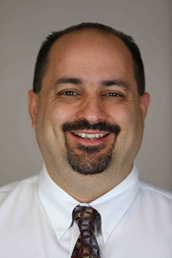
James Johnston
When James Johnston first became principal of Alice Ott Middle School in Portland, Oregon, student expectations and achievement were low. There were significant achievement gaps among special education, English-language learners, economically disadvantaged, and white students. Students spoke 32 different languages.
Leaders, faculty, and staff readily identified the focus of their work – student language barriers. As they shifted to a focus on the critical practices, faculty and staff developed a school-wide literacy initiative across all content areas, giving life to their belief of preparing all students for success. The collaborative culture of the school along with teachers’ focus on student needs led them to commit to a goal of “all students at or above grade level by the end of eighth grade.”
The vision and culture of the school compelled faculty and staff to develop practices specific to students’ needs, share the results of their work, identify what worked and what did not work, and make changes as necessary. They left nothing to chance and demonstrated a vital shared responsibility to common goals and beliefs.
As a result, Alice Ott was named a 2014 MetLife NASSP Breakthrough School for its academic success and a 2015 National Title I Distinguished School for helping low-income students succeed and closing achievement gaps.
Combining vision and hard work
These leaders used all of the Five Critical Practices and skills of effective leadership to improve student learning. It wasn’t magic; it was method—followed with logic, perseverance and determination, and with a great deal of heart.
_________
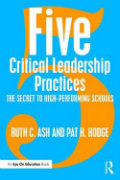
Pat Hodge has dedicated her entire career to K-12 education. She is a founding partner of Education Solutions and co-author of Five Critical Leadership Practices. During her long career in educational leadership, Dr. Hodge served as a teacher, counselor, psychometrist, principal, director of curriculum and instruction and student services, assistant superintendent for curriculum and instruction, assistant superintendent for administrative services, and adjunct instructor for Samford University.

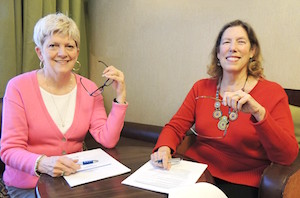

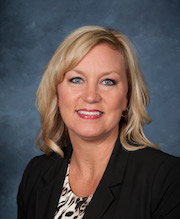






























Thank you for sharing your expertise and vision!